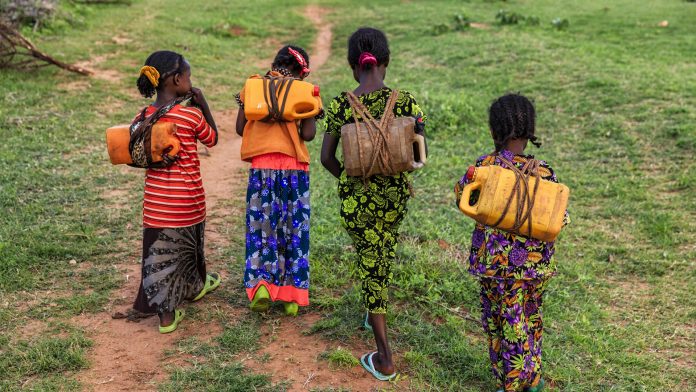
New research finds that reducing carbon emissions could prevent 6,000 heat-related child deaths in Africa every year.
International scientists, headed by the University of Leeds and researchers at the London School of Hygiene & Tropical Medicine (LSHTM), have found that 6,000 heat-related child deaths are prevented when global temperatures are limited to the Paris Agreement’s 1.5 ºC target through to 2050.
Without intervention, heat-related child deaths could double in Sub-Saharan Africa by mid-century if high emissions continue.
Their findings were published in the journal Environmental Research Letters.
The impact of climate change on heat-related child deaths
The collaborative effort from researchers uncovered that climate change had affected yearly heat-related deaths of children under five in sub-Saharan Africa from 1995 to 2050. Further findings highlight that since 2009, heat-related child deaths have doubled from what they would have been without climate change.
Heat mortality resulting from climate change caused by human activities and population growth outweighed reductions in heat-related death due to improvements associated with development, such as improved healthcare.
“As temperatures continue to increase due to climate change, so will heat-related deaths. Young children are especially vulnerable to the effects of heat exposure. They have limited ability to thermoregulate, and high temperatures can increase disease transmission and outbreaks,” commented Dr Cathryn Birch, School of Earth and Environment.
Carbon emissions and rising global temperatures
The team examined the impact of three carbon emission scenarios on growing global temperatures and the effect on future heat-related child deaths.
In the high emission scenario, where carbon emissions were not reduced, heat-related child deaths doubled by 2049 compared to 2005-2014. Consequently, estimates of 38,000 child deaths per year could occur by 2049.
Contrastingly, the low emission scenario prevented around 4,000-6,000 heat-related child deaths in Africa. Rapid carbon emission cuts across sectors were required to achieve this and to remain on target for the Paris Agreement.
The medium emission scenario, which combines elements of the low and high circumstances, would still prevent 2,000-3,000 deaths per year.
Study co-author Dr Cathryn Birch from Leeds’ School of Earth and Environment said: “Temperatures are already increasing in Africa. Since 1980, temperatures have risen between 0.2 and 0.4°C per decade and as temperatures continue to increase due to climate change, so will heat-related deaths.
“Young children are especially vulnerable to the effects of heat exposure. They have limited ability to thermoregulate, and high temperatures can increase disease transmission and outbreaks.
“This research details the very real consequences of allowing carbon emissions to continue unchecked. Our results underscore the need for more ambitious mitigation measures to protect vulnerable populations and the need for proactive and effective adaptation.”
The vulnerability of children in low-income countries
Children in low-income countries with high temperatures are vulnerable to heat due to pre-existing infections, undernutrition, poor healthcare systems and environments that do not provide heat protection. Limited research in this area means that heat-related child deaths are understudied.
“More research is urgently needed to understand how extreme heat affects the health of children and which interventions can effectively manage and mitigate heat impacts on vulnerable populations and save thousands of children from dying unnecessarily,” concluded Dr Shakoor Hajat, London School of Hygiene & Tropical Medicine.









